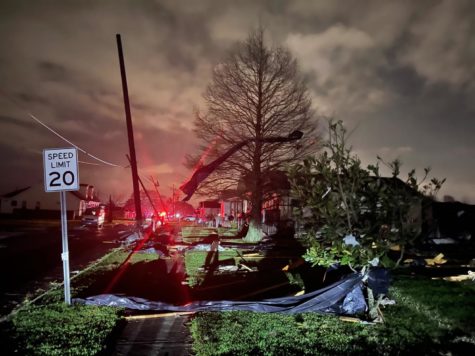Repeated New Orleans storms raise questions about extreme weather
April 6, 2022

A tornado tore through Arabi, Louisiana on March 22. Severe storms barreled through southeastern Louisiana a week later, spurring a tornado that touched down in St. Tammany Parish and left thousands without power. New Orleans received another tornado watch Tuesday morning.
The three threats in quick succession raise an alarming new question across southern Louisiana: are tornadoes becoming a new normal?
The short answer is no, Christopher Oliver, senior professor of practice in the sociology and environmental studies departments, said. “This has been unique for a number of reasons.”
Only two EF3 tornadoes have hit New Orleans since 1950 — one in 2017, and the one that pounded Arabi last month.
Arabi’s recent tornado was the strongest to hit New Orleans since records began.
Tuesday marked New Orleans’ third tornado watch in three weeks.
It is difficult, however, to draw conclusions from a short time span, George Flowers, associate professor in the earth and environmental science departments said.
“Whatever goes on in a single year doesn’t make a pattern,” he said.
He cautioned against crediting the recent tornadoes to broader trends of climate change, saying it is hard to link specific weather events to the warming earth.
“This isn’t just a hurricane or tornado story. It’s a global atmosphere process,” Flowers said. “So it’s very complicated.”
The earth adds more energy to the atmosphere as it heats up. “But how that’ll manifest itself in Louisiana in terms of tornado frequency and tornado intensity — that can’t be predicted,” Flowers said.
The strange string of tornadoes still inflicted deep damage. Two deaths are connected to the recent tornado in Arabi. The tornado also injured close to a dozen people and wrecked around 150 homes. More than 50,000 people lost power last Wednesday as the second round of storms moved in.
For New Orleanians used to dealing with hurricanes, tornadoes bring new threats. Hurricanes have a wider scope of devastation, but people can often evacuate days in advance. Tornadoes can strike with little warning.
“Preparing for it is not an easy thing to do,” Oliver said.
Federal Emergency Management Agency aid critical to hurricane relief does not come with many tornadoes, nola.com reported, because of the storms’ smaller impacts.
Planning for hurricanes is the priority, Oliver said, but “thinking about how tornadoes fit into that from an emergency management and planning perspective certainly needs to be part of the conversation.”
“We live in a kind of architectural situation where there isn’t a lot people can do,” Oliver said. New Orleans lacks the basements many midwestern residents hunker down in during tornadoes.
“That does leave us more vulnerable,” Oliver said.
Tornadoes are still abnormal for New Orleans. Climate change increases the risk of severe weather like hurricanes and heat waves, but there is no definitive link to more frequent or intense tornadoes so far. Predictions for future years are still uncertain.
“In the spring, you always have the potential for severe weather,” Flowers said. “So I don’t think you can make any large scale conclusions about this. Next year we may have no tornadoes.”






















Leave a Comment